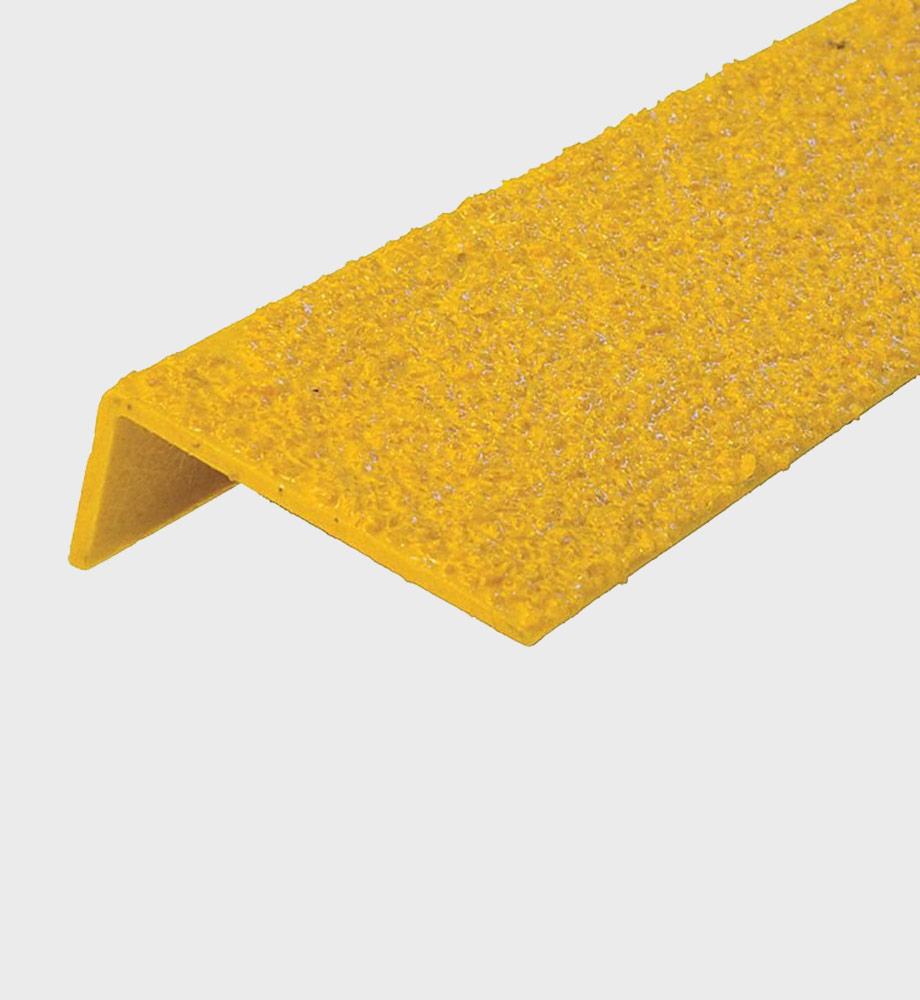Key Features
- Anti-skid surface (coarse grit or serrations); UV and fire-resistant (UL94 V0 options); stainless steel inserts for recess (for anchored metal tread covers). Sizes from 20mm to 50mm reveal.
Benefits
- Dramatically improves foot traction on stairs, reducing slips and falls. FRP is much more durable than wood or vinyl nosing — it won’t warp or rot even in damp conditions. It is chemically inert, so cleaning or de-icing salts won’t degrade it. Very low maintenance (no repainting). Also provides a high-contrast edge to help visual safety (especially if colored).
Applications
- All commercial and industrial staircases: parking garage entries, manufacturing plant stairs, ship gangways, loading docks, and even public buildings. Often used on the top edge of FRP or metal treads.
Technical Specifications
- Standard widths 2″–4″, thickness 8–12mm. Grit or textured surface qualifies as OSHA Class 1. Rated for heavy foot traffic (UL94 V0 flame class). Fastened with countersunk screws or stainless clips.
Unique Selling Points (USPs)
- Unlike metal nosing, FRP nosing never rusts or gets slick when wet. The photo-luminescent (glow-in-dark) and colored versions increase safety even in power outages. Custom length and shape profiles can be produced for curved or ADA ramps.

